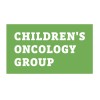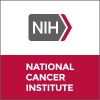
Haploidentical Natural Killer (NK) Cells in Patients With Relapsed or Refractory Neuroblastoma
NeuroblastomaPrimary: Evaluate safety, feasibility, persistence, and anti-tumor effect of infused haploidentical donor-derived natural killer (NK) cells and low-dose interleukin-2 (IL-2). Secondary: Quantification of cytokine levels; Assessment of NK cell immunophenotype and function.

Late Effects After Treatment in Patients With Previously Diagnosed High-Risk Neuroblastoma
Recurrent NeuroblastomaStage 2A Neuroblastoma4 moreThis research trial studies late effects after treatment in patients with previously diagnosed high-risk neuroblastoma. Studying late effects after treatment may help to decide which treatments for high-risk neuroblastoma are better tolerated with less side effects over time.

Dasatinib, Ifosfamide, Carboplatin, and Etoposide in Treating Young Patients With Metastatic or...
Brain and Central Nervous System TumorsChildhood Germ Cell Tumor10 moreRATIONALE: Dasatinib may stop the growth of tumor cells by blocking some of the enzymes needed for cell growth. Drugs in chemotherapy, such as ifosfamide, carboplatin, and etoposide, work in different ways to stop the growth of tumor cells, either by killing the cells or by stopping them from dividing. Giving dasatinib together with ifosfamide, carboplatin, and etoposide may kill more tumor cells. PURPOSE: This phase I/II trial is studying the side effects and best dose of dasatinib when given together with ifosfamide, carboplatin, and etoposide and to see how well they work in treating young patients with metastatic or recurrent malignant solid tumors.

ZD6474 Alone and in Combination With Retinoic Acid in Pediatric Neuroblastoma
NeuroblastomaThe goal of this clinical research study is to find the highest safe dose of the drug ZactimaTM (ZD6474) in patients with neuroblastoma or medulloblastoma that has gotten worse, has come back, or has not responded to the treatment. Primary Objective: -To determine the pharmacokinetics, safety, dose-limiting toxicities, and maximum tolerated dose of ZD6474, alone in children with medulloblastoma, and alone in combination with retinoic acid, in patients with relapsed or refractory neuroblastoma. Secondary Objective: -To assess progression-free survival (PFS) and objective tumor response rates in children with relapsed and refractory neuroblastoma and medulloblastoma treated with ZD6474 +/- retinoic acid in the context of a Phase I trial.

Pyrazoloacridine and Stem Cell or Bone Marrow Transplantation in Treating Young Patients With High-Risk...
Disseminated NeuroblastomaRecurrent NeuroblastomaThis phase I trial is studying the side effects and best dose of pyrazoloacridine given together with peripheral stem cell or bone marrow transplantation in treating young patients with high-risk neuroblastoma. Drugs used in chemotherapy use different ways to stop tumor cells from dividing so they stop growing or die. Combining chemotherapy with peripheral stem cell or bone marrow transplantation may allow the doctor to give higher doses of chemotherapy drugs and kill more tumor cells.

A Phase I Study of Lyso-thermosensitive Liposomal Doxorubicin and MR-HIFU for Pediatric Refractory...
Pediatric CancerSolid Tumors8 moreThis study is looking to determine the maximum tolerated dose (MTD) and recommended phase 2 dose (RP2D) of lyso-thermosensitive liposomal doxorubicin (LTLD) administered in combination with MR-HIFU in children with relapsed/refractory solid tumors, which may include but are not limited to rhabdomyosarcoma and other soft tissue sarcomas, Ewing's sarcoma family of tumors, osteosarcoma, neuroblastoma, Wilms' tumor, hepatic tumors, and germ cell tumors.

Neuroblastoma Protocol 2008: Therapy for Children With Advanced Stage High Risk Neuroblastoma
NeuroblastomaA Phase II study of temsirolimus in combination with standard chemotherapy (irinotecan; cyclophosphamide, doxorubicin and etoposide (CAE); cisplatin and etoposide (HiPE) and topotecan (TPT) followed by and additional six courses of induction chemotherapy and then intensification with autologous hematopoietic stem cell transplantation. The first five courses of induction chemotherapy will also evaluate the feasibility of combining weekly temsirolimus with these standard chemotherapy combinations. This will be followed by 16 months of oral maintenance therapy with eight months of 13-cis-retinoic acid and then eight months of oral topotecan.

Use of Rituximab in Opsoclonus-Myoclonus in Children With Neuroblastoma
NeuroblastomaOpsoclonus-myoclonusThe purpose of this study is to evaluate the feasibility of giving four weekly doses of Rituximab (anti-CD20 antibody) in the treatment of children with refractory neuroblastoma associated opsoclonus-myoclonus. Patients must have continued symptoms of opsoclonus, myoclonus and or ataxia despite surgical resection and a minimum of one month of steroid therapy. Evaluations include clinical symptoms of opsoclonus-myoclonus and ataxia as well as detailed evaluation of learning and development.

Naxitamab and Granulocyte-Macrophage Colony Stimulating Factor (GM-CSF) Combined With Isotretinoin...
NeuroblastomaThis is a single-arm, multicenter clinical trial conducted in patients ≥ 12 months of age with high-risk neuroblastoma in first complete response. 62 patients will be enrolled to receive naxitamab + GM-CSF in combination with isotretinoin. In line with post-consolidation maintenance treatment of high-risk neuroblastoma, this trial will include patients with high-risk neuroblastoma in first complete response. Patients must have completed a multimodal frontline regimen (induction and consolidation) and have achieved complete response (positive bone marrow minimal residual disease as assessed by RTqPCR is allowed) following the multi agent induction and consolidation therapy.

Next Generation Personalized Neuroblastoma Therapy
NeuroblastomaCancerThe purpose of this research study is to match genomic aberrations in tumor cells at time of relapse to rationally designed combinations of molecularly targeted agents. This study will be done in two parts: Part I: Tumor will be accessed at study entry via a biopsy and subjected to deep sequencing to identify protocol-specified biomarkers for therapy assignment. Part II: If the tumor contains a genetic change defined by the study as being actionable, and other criteria are met, participants will be assigned to therapy based upon the genetic changes identified in the tumor biopsy.
